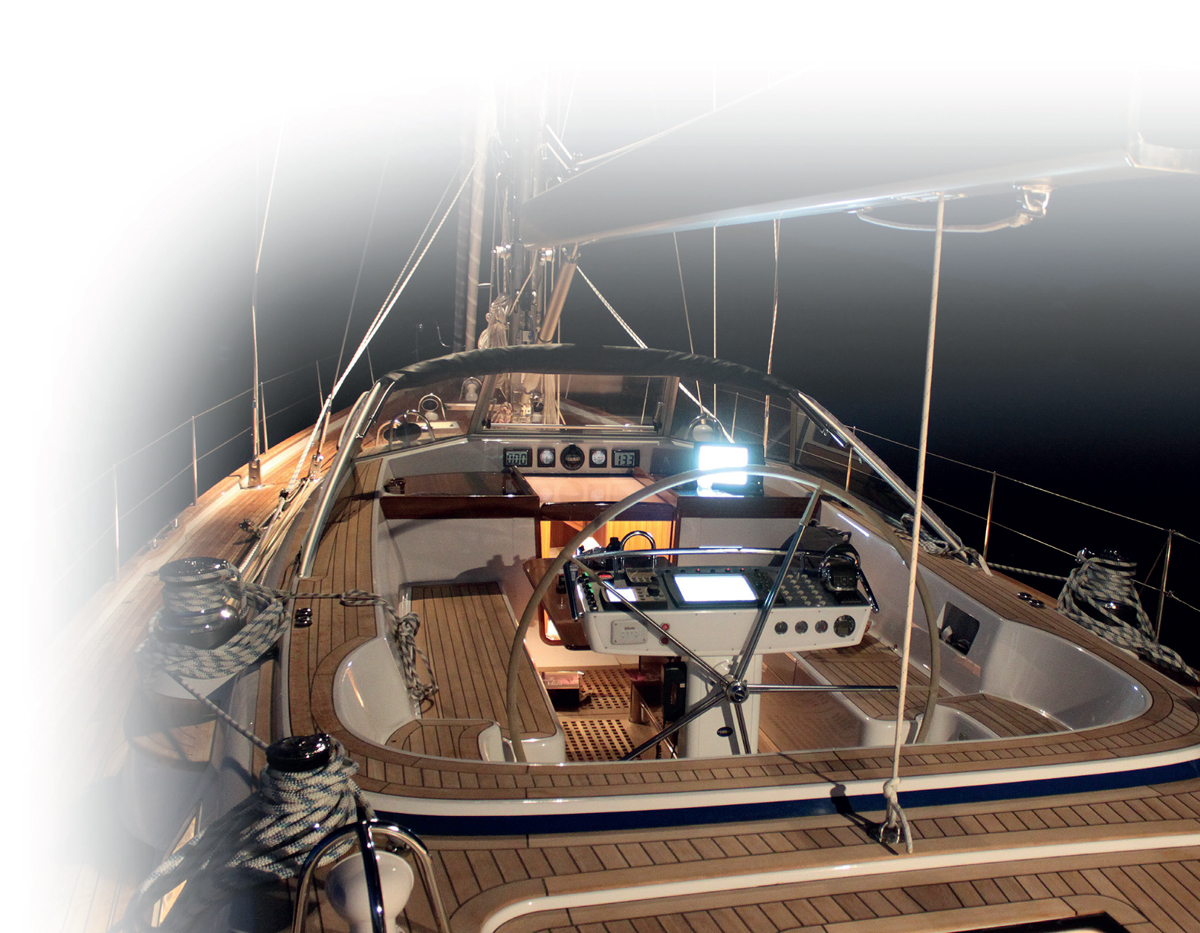
Having a generator on board means you don’t have to ration the power, or worry about how long you can keep the lights burning.
Generator
Generators are becoming common on even quite small boats, allowing complete electrical freedom from AC shore power. High draw items such as air conditioning units, dive bottle compressors and other luxuries can now be run at anchor, although the completely silent marine generator is still some way off.
Compact and reliable, marine generator sets have also become increasingly affordable in a highly competitive market. Some generators are fully portable, and can be run on deck for powering hand tools or a small watermaker, or for just topping up flattened batteries. If you want more power, then an installed generator set is a good investment, especially if it can run off the same fuel as the yacht’s main engine. Great advances have been made in efficiency and noise reduction in recent years.
The first decision when deciding on a generator is whether you need a full AC system, supplying mains-quality alternating current, or a DC system, which is designed to simply top up the batteries. Many yachtsmen don’t want to run a full AC generator when moored in a peaceful location, instead opting to have a powerful battery bank with an inverter of the equivalent output of a mains generator. A smaller and cheaper DC generator can be used to charge the batteries when under way, allowing the crew to enjoy a quiet night at anchor running all their AC domestic appliances from the inverter.
How much power?
The first consideration is to calculate how much mains (AC) power you will require on board, so you need to compile an ‘energy shopping list’. Bear in mind that some types of electrical equipment such as fridges or air conditioners have a high start-up load, known as the ‘loaded requirement.’ Other items, such as televisions, have a resistive load, which is constant throughout the operation.
Each piece of mains-powered equipment should have a label that gives its peak load requirements, and by adding these together you will reach a figure for the total demand. It is unlikely that every mains appliance will be running at peak load simultaneously, so estimate what is most likely to be on at the same time, calculate the peak load demands, and then add a 10 per cent margin. This will give you the ideal size of generator set for your boat.
Another point is to decide for how long you want to run an AC generator at any one time, as in a peaceful anchorage even the quietest generator can still radiate its muffled noise and exhaust far and wide, as well as disturb the sleep of those on board. Good power management can mean that the generator is only needed for short periods, and by sizing the set to the yacht’s requirements, it need not be too big, complex or expensive.

Having a generator on board means you don’t have to ration the power, or worry about how long you can keep the lights burning.
Types of generator
Petrol-powered portable: Enclosed in a neat plastic carry case, the portable generator usually uses a quiet, constant speed four-stroke motor with full electronic power management. The smallest sets are the size of airline-approved carry-on bags, delivering between 600 watts and 2kW depending on the model. Some will have a dedicated 12-volt DC outlet for battery charging while also powering another mains device.
Enclosed diesel: This type is designed for small to mid-range yachts, and is supplied as an engine in its own enclosed housing to minimise noise and vibration. The compact case means it can be mounted almost anywhere suitable on board and can run off the yacht’s own fuel supply. Additional exhaust mufflers help to keep noise to a minimum.
Main Genset: Designed for use in larger engine rooms where there is already substantial soundproofing and good ventilation, these larger sets are intended for more or less constant operation when the yacht is crewed, especially on charter yachts where air conditioning and fully equipped galleys are central to the yacht’s functioning.
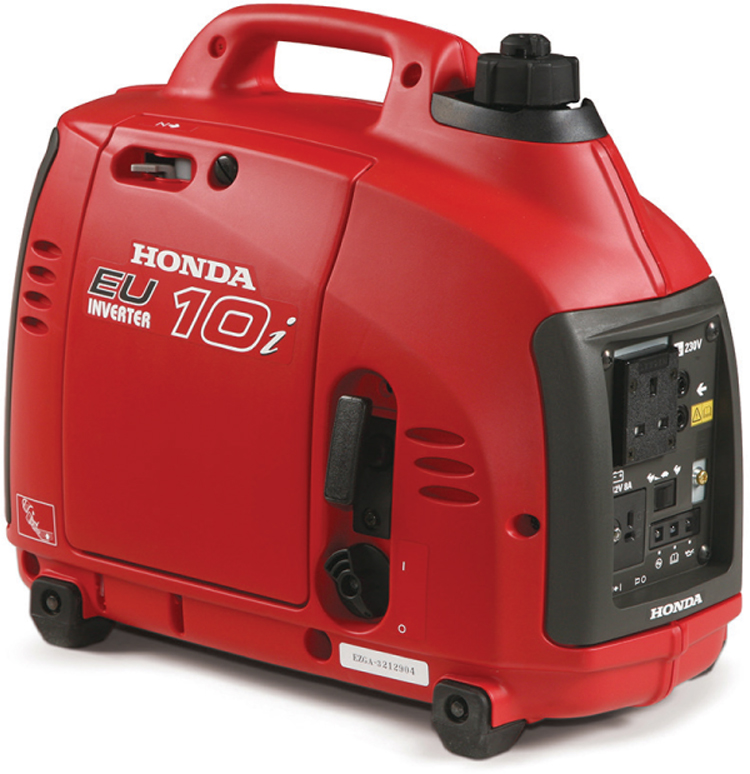
The simplest way to carry mains power aboard is with a quiet running portable four-stroke generator like this example from Honda. Some have built-in 12V battery chargers.
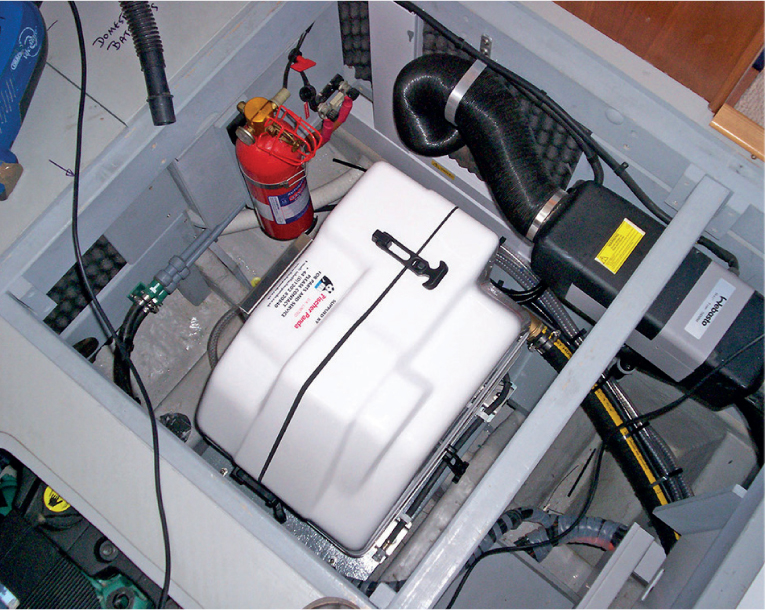
Popular with small- to mid-range cruisers and motorboats is a self-contained unit such as this DC generator from Fischer Panda. It is enclosed in a sound-deadening shell.
Hybrid: A hybrid is a generator attached to the back of the yacht’s main engine, which simplifies the installation enormously. It can also be used as an engine starter and auxiliary propulsion system.
Diesel-electric: This is where the generator is the heart of the boat, where every system, from the cooker to the propulsion, is entirely electric. Large cruise ships use this system, but now compact solutions are being trialled for smaller craft. The generator becomes a multipurpose power station with a variable speed motor for the best use of fuel, plus built-in inverters and battery chargers that sense the energy demands, and adjust the current flow accordingly.
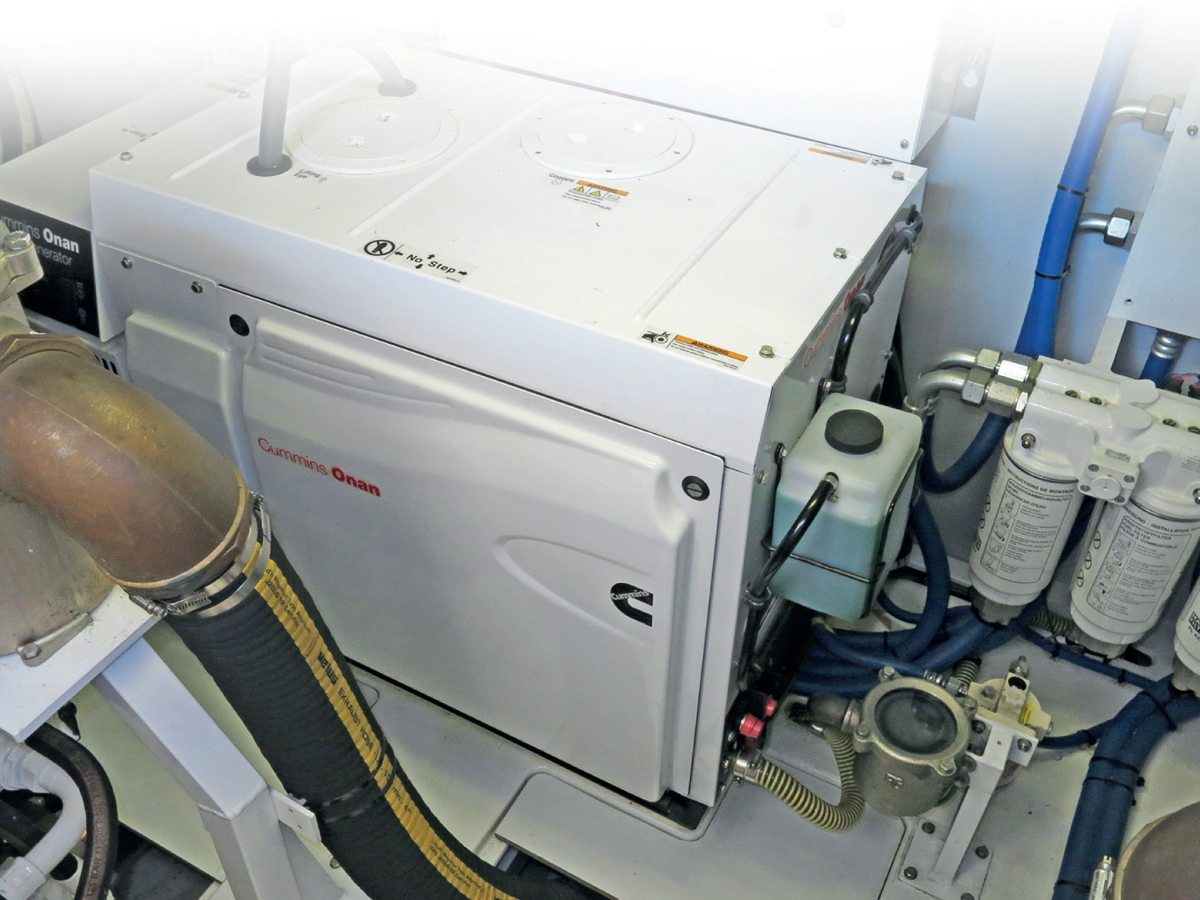
Larger vessels will carry a stand-alone generator in the engine room, where there is already the provision for fuel feeds, ventilation and soundproofing. Note the array of fuel filters.
Installing a generator
Having chosen a generator of a suitable capacity, the next task is to install it into the boat and configure the power takeoffs. A professional generator installer will need about 3–4 days for a complete job, although a competent DIY enthusiast could also tackle the task after some careful planning.
To start with, the boat will need to be out of the water for the skin fittings to be drilled and fitted. For most generators of up to about 30kVA (kilovolt amps), an 18-mm (¾-in) skin fitting is needed for the cooling intake, and you’ll need a 25-mm (1-in) outlet for the underwater exhaust discharge.
You’ll also need to find a suitable location for an enclosed system. On some motorboats, there will be space in the engine compartment or the adjacent lazarette, but on smaller sailing yachts you may need to find an empty locker instead. Remember that a Genset must be able to draw in air for combustion and sea water for cooling, while also being able to discharge the exhaust as unobtrusively as possible. You need to also consider whether the set will interfere with other mechanical or electrical systems.
Before fitting the generator, it’s best to run in all the services needed first, such as air ducts, cooling hoses, starter battery cable, AC cable and fuel lines as it may be more difficult once the set is in place. The service side of the generator – the filters, dip stick and so on – should be easily accessible for routine checks, so ensure this is outward facing.
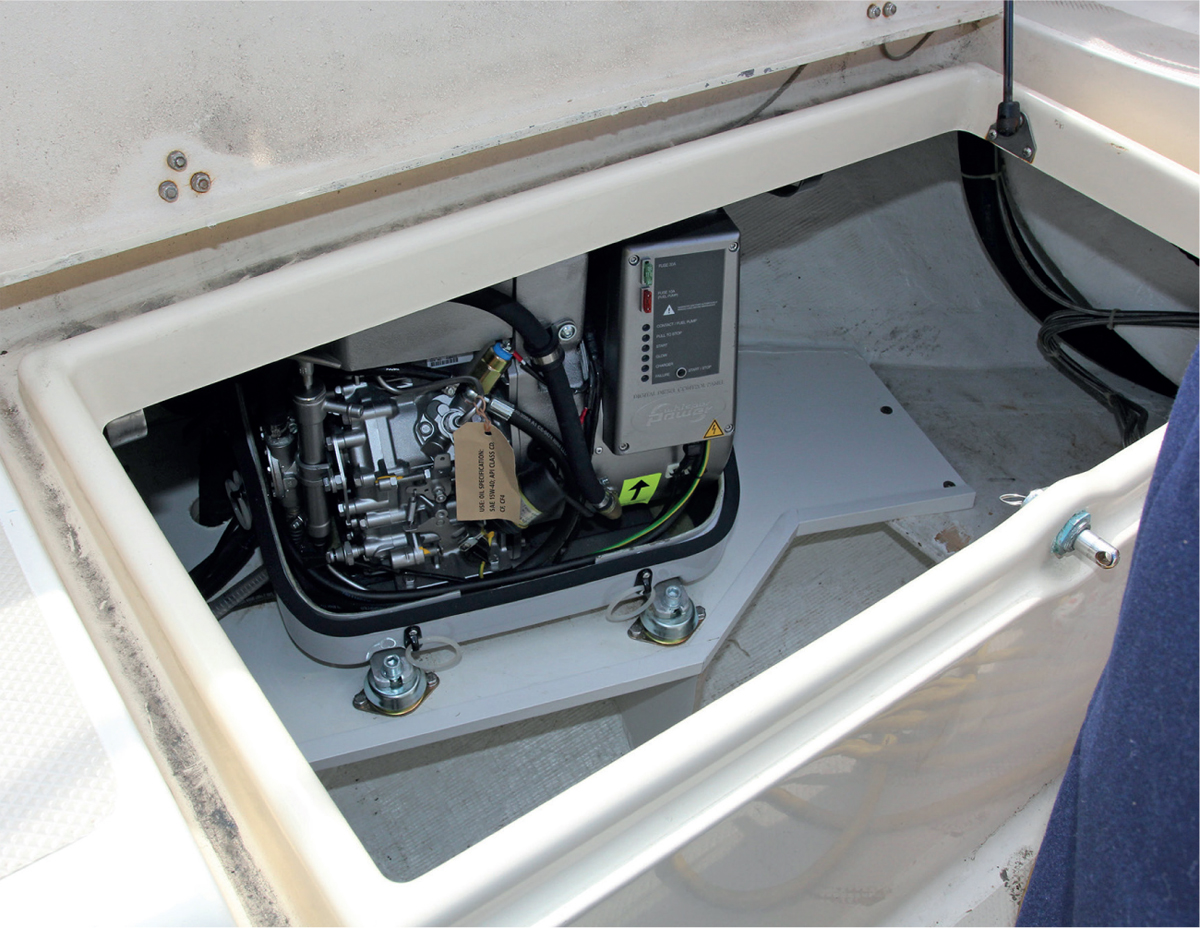
The generator should be mounted on a firm base that cannot vibrate, but in an area that can be vented and has access to fuel pipes and cooling water.

When installing the generator set, make sure it is orientated in such a way that you can reach the key service points, such as dip sticks, air filters and drive belts.
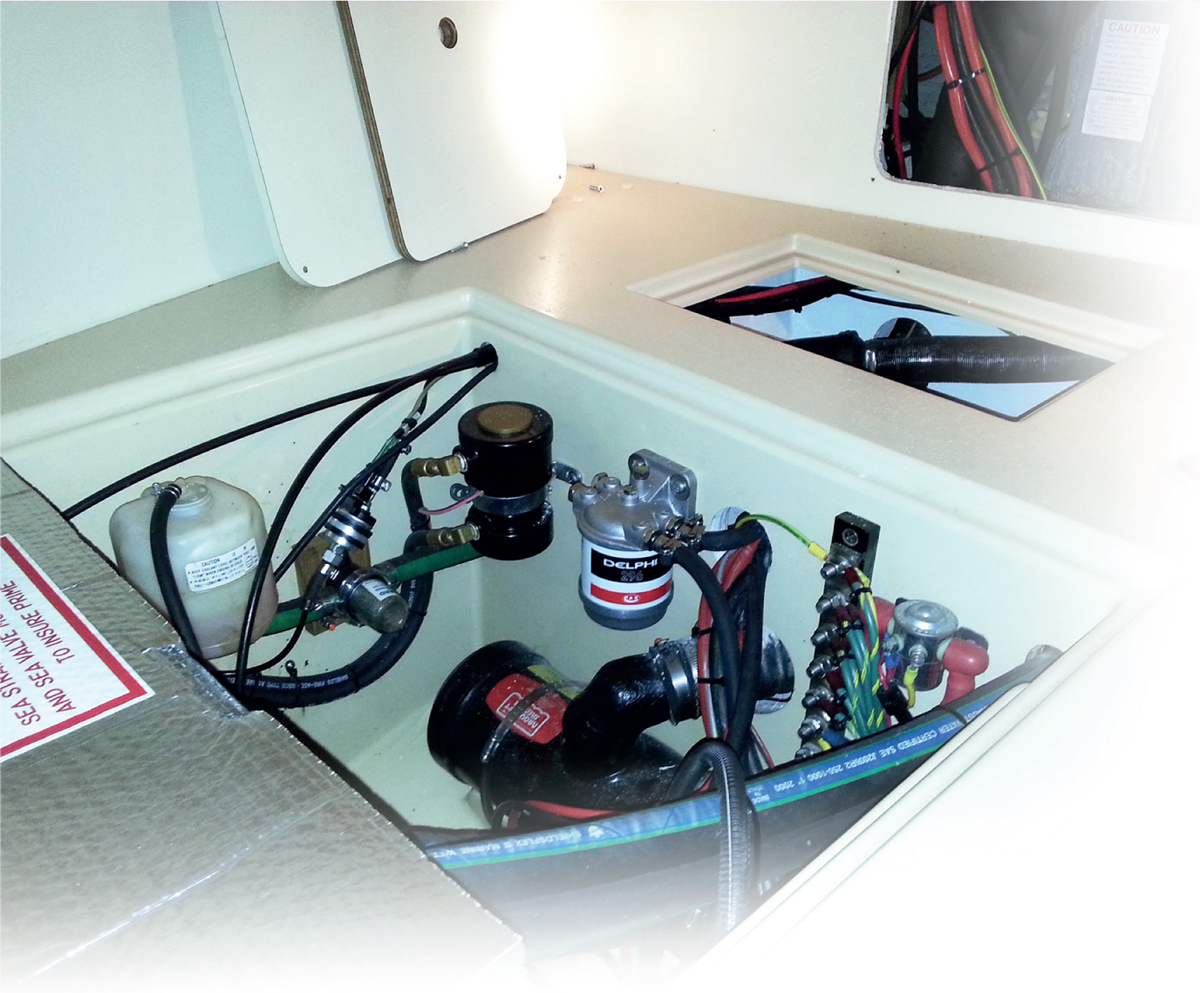
It is a good idea to have the service items such as fuel filters in the most accessible place, such as their own dedicated locker nearby.
Noise issues often occur if the set hasn’t been properly mounted. Sometimes, the flat base supporting the set becomes a diaphragm, and transmits vibrations into the structure of the boat. The manufacturer will provide guidelines about the correct way to site the product so the noise-absorbing mountings can work at their best.
Check how the generator’s own starter battery will be recharged. If the generator doesn’t have its own charging output, you’ll need to run a charge cable from the main battery charger, or install an independent battery charger drawing off the generator’s output. Alternatively, you can use the boat’s own battery banks as a starting source. Usually, motorboats (where engines run all the time when underway) will tap the genset starter into the engine batteries, and a yacht will use the domestic ones.
Portable generator sets will have their own integral fuel tank, but fixed generator sets usually draw off the boat’s own fuel supply. On larger boats the generator may well have its own tank, but fitted with changeover valves so it can draw from any of the other fuel tanks on board.
The shore power changeover switch and generator start and control panel are usually mounted by the navigation station, where the circuit breakers are often located as well. Main sockets that were powered from the shore power can now also supply AC output from the generator.
The generator in use
Finally, do have some consideration for your neighbours if using a generator at night. There is nothing worse than lying close to a yacht with a badly installed genset popping and gurgling incessantly, especially if the exhaust keeps rolling clear of the water. A properly sized and installed generator can be used judiciously with very little impact, while providing a whole range of mains-powered comforts on board.

A completed installation in a 16m (54ft) yacht. The generator is sharing the systems supplying the engine room, and is fully accessible for servicing.